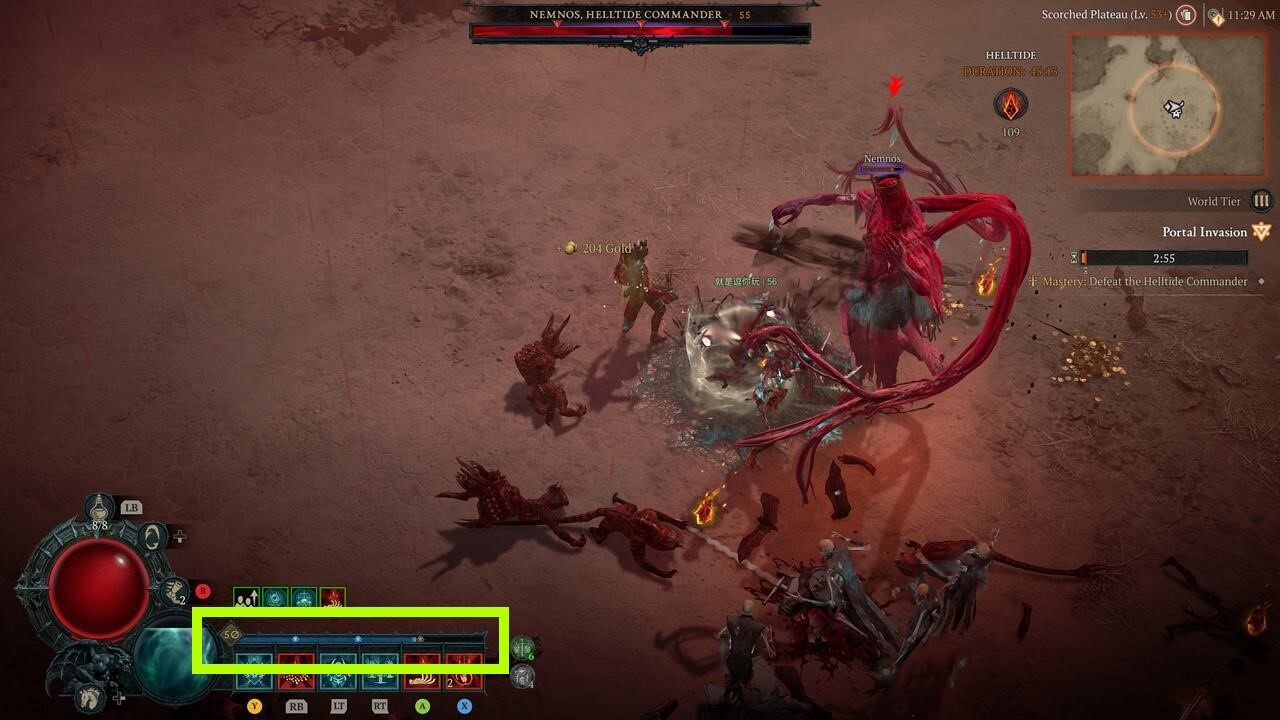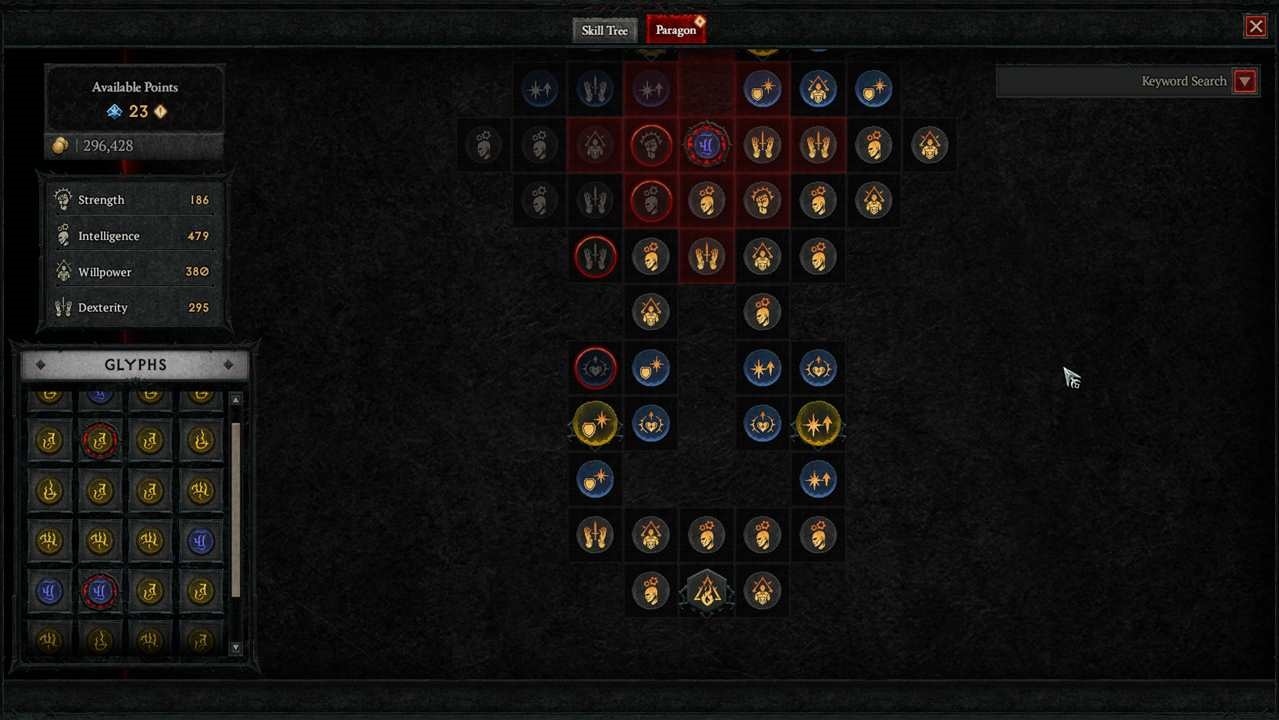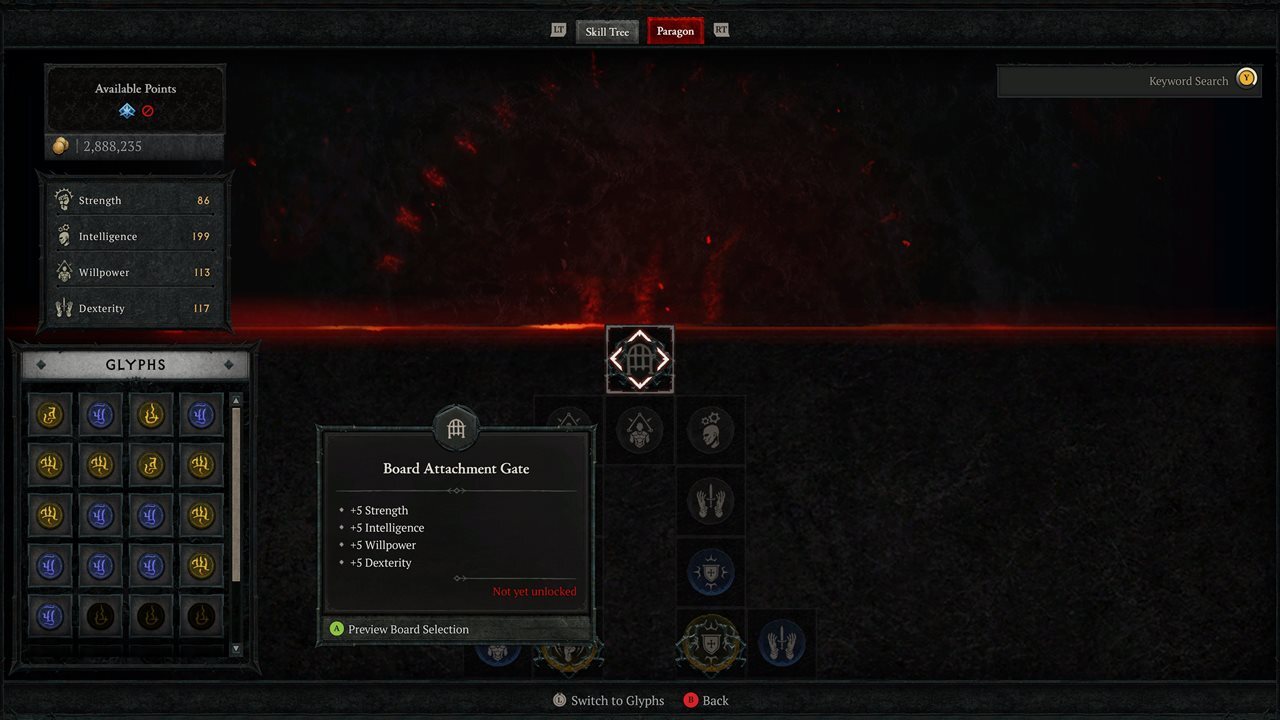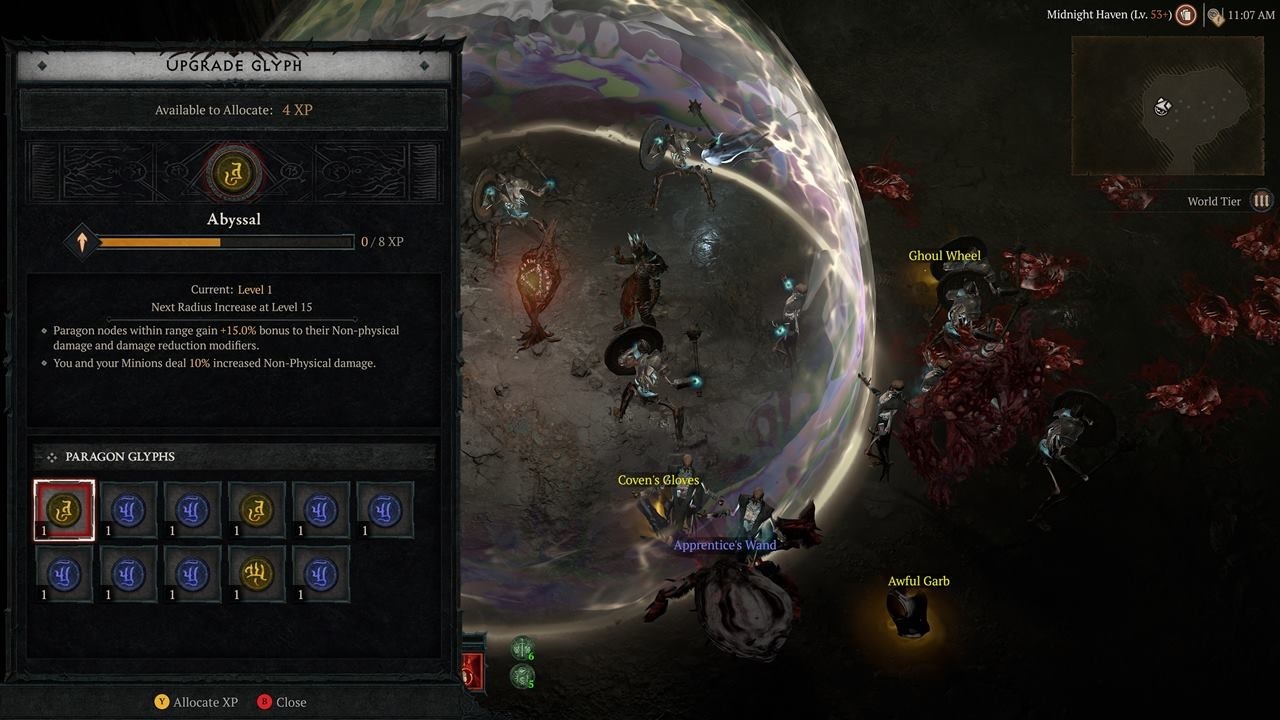Diablo 4 Paragon Board System And Paragon Glyphs Guide
The Diablo 4 Paragon system will likely cause a few headaches initially. After leveling up to level 50, you’ll soon find out that there are even more mechanics to consider for your build. Here’s our guide to help you with the Paragon Board and Paragon Glyphs in Diablo 4.
How to Unlock and Use the Paragon Board and Paragon Glyphs in Diablo 4
The Diablo 4 Paragon Board is unlocked automatically once you reach level 50. In fact, we can consider levels 1 to 49 as the portion where you come up with the core facets of your build, such as skills and passives. Then, at level 50 and beyond, all your XP gains will go toward the Paragon Board system. This can be accessed by opening your character page, going to the Abilities panel, and switching to the Paragon tab.
Now, to be fair, the first time you see the board, it can feel a little daunting. As such, we’ll summarize what you can expect.

Paragon XP and Stat/Attribute Effects
As seen in the image above, a bar represents your XP gains past level 50. Each segment or pip grants +1 Paragon Point, which let you select a particular node on the board. We’ll talk more about the mechanic later. For now, though, let’s talk about an oft-neglected concept: stats or attributes.
The reason why they’re important is that the Diablo 4 Paragon system has nodes that directly increase or require attribute values. However, not all classes, or even builds, make use of all of them. Here’s what they affect:
- Strength – Increases armor.
- Intelligence – Increases skill damage and resistance to all elements.
- Willpower – Increases resource generation, healing received, and overpower.
- Dexterity – Increases dodge chance and critical hit change.
Stats are generally affected by the items you have equipped which, in turn, are further boosted by your Paragon nodes. As such, Sorcerers aren’t expected to use Strength, whereas Necromancers might want a bit of Willpower for their Fortify and Overpower-centric builds.

Paragon Board Types of Nodes
As for the Diablo 4 Paragon Board system, bear in mind that each class has its own unique board with a starting point. As you level up and select more nodes, you’ll eventually unlock additional boards, too. Here are the types of nodes seen on the board:
Normal Nodes (grey) – Give +5 points to a particular attribute (i.e. Strength, Intelligence, Willpower, or Dexterity).
Magic Nodes (blue) – Some of these will add points to an attribute. However, others will also grant bonuses to other facets, such as armor, cooldown reduction, resistances, and the like.
Rare Nodes (yellow) – Rare Nodes provide two types of bonuses to the aforementioned facets. There’s also a bonus that you’ll receive if you meet the requirements. One example is the Necromancer’s Prime node, which has the following benefits:
- +10% damage.
- +4% maximum life.
- +10% more damage if you have 160 Willpower.
Legendary Nodes (orange) – Legendary Nodes are build-defining due to rather specific boons. For instance, one might greatly increase your damage per crowd-controlled enemy, which is useful for a particular build that freezes, stuns, or slows hostiles.
Glyph Sockets (red) – Glyph Sockets are special nodes that allow you to place Paragon Glyphs (more on these in a while).
Board Attachment Gate (silver and blue) – At the very end of the board, you’ll see the Board Attachment Gate. This is also a special node in that it adds +5 to all attributes. Moreover, it unlocks yet another board that you can tweak.

Paragon Glyphs and Leveling via Nightmare Dungeons
The Diablo 4 Paragon Glyphs are random drops once you’ve unlocked the system. You won’t get them all in a short span of time, so a bit of exploration and looting are in order. Think of Paragon Glyphs as akin to the aforementioned node rarities, except they’re fairly class-specific and they affect other active nodes within their radius. A good example can be seen in the image below, which shows the Necromancer’s Abyssal Glyph. It has the following effects:
- Radius size: 3
- Bonus: Paragon nodes within range gain +15% bonus to non-physical and damage reduction modifiers.
- Additional bonus (requires +25 Dexterity within radius) – You and your minions deal +10% non-physical damage.

Because the radius of each glyph placement is rather limited, you can increase its effects further by leveling the glyph. This is done by way of Nightmare Dungeons, which are available at World Tier 3. After clearing a Nightmare Dungeon, you can interact with the Awakened Glyphstone in the boss’ arena. This will allow you to add XP to a chosen glyph, eventually increasing its rank.
Diablo 4 has numerous classes, mechanics, and activities. For more about the game, you can visit our D4 guides hub.
The products discussed here were independently chosen by our editors.
GameSpot may get a share of the revenue if you buy anything featured on our site.
For all the latest Games News Click Here
For the latest news and updates, follow us on Google News.

